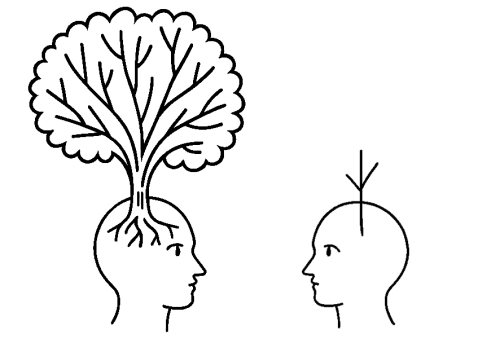The mind-mirror effect
Definition
The mind-mirror effect is the tendency of people to assume that others think in the same way as themselves. This is not about the content of thinking (what someone thinks), but about the style or structure of thinking (how someone thinks). This makes it a new and distinctive concept within the study of cognition and communication.
The difference with existing theories
There are already concepts that resemble this effect, such as the false consensus effect – the assumption that others share our beliefs or opinions. But the mind-mirror effect goes a step further: it is not about beliefs, but about the way our brain processes information. A low-contextual thinker expects that the other person also thinks linearly and literally, while a high-contextual thinker assumes that everyone implicitly picks up on connections and nuances.
Intermezzo
Initially, everyone tends to think that the other person thinks like themselves:
- Someone who thinks high-contextually assumes that others also think that way.
- Someone who thinks low-contextually makes the same mistake in their own direction.
This explains why the mind-mirror effect is a source of many relational misunderstandings, both in families and at work.
In the context of transactional behavior: Because a transactional thinker expects everyone to think that way, he often believes that the entire society also works that way. At a meeting of business leaders, for example, this way of thinking often fits seamlessly.

Core sentence
The famous quote by René Descartes: Je pense, donc je suis (I think, therefore I am), can be extended to: You think, but you don't think like me. This summarizes the essence of the mind-mirror effect: you also think, but not in the same way as I do.
Consequences
The mind-mirror effect can lead to:
- misunderstandings in communication
- frustrations in relationships
- incorrect assessments in care or aid
- overestimation or underestimation of others
Innovative character
The mind-mirror effect offers a new conceptual framework for understanding human interactions. Where many existing theories focus on what people think, this concept emphasizes how they think – and how different those thinking styles can be. This concept was introduced by Koen Thomeer in the context of Context Thinking.
Further
See also The spectrum of context sensitivity for the variation in thinking styles, and Mind-mirror effect in care for the consequences in mental healthcare.